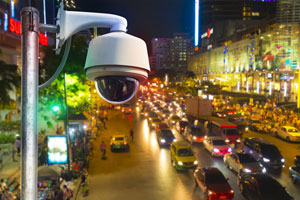In Minnesota and Louisiana, video has played a key role in piecing together the details of two recent high-profile shootings involving white police officers and black residents. Footage taken by civilians captured both Philandro Castile’s and Alton Sterling’s last moments before their deaths, sparking outrage nation- and worldwide.
Why is video evidence so powerful? For one, it’s visually compelling, meaning it’s more likely to trigger an emotional response and potentially work in favor of the defendant. Secondly, it gives the jury more information to work with in addition to oral and written statements. For these reasons, visual evidence such as video has been shown to be advantageous to both lawyers and jurors in court. We’ll highlight some main types of video evidence and discuss what requirements must be met in order for video to be deemed admissible evidence in court.
Types of Video Evidence
There are many types of video evidence, but some notable examples include:
Body Cameras: In the past few years, the use of police body cameras has become more widespread (although a bill that called for their expansion in Colorado recently failed to pass in the state Senate).
While some say that body cameras are beneficial in holding police officers more accountable for their actions, the shooting of Alton Sterling in Baton Rouge, La., showed a flaw in this technology when the body cameras worn by the two officers involved became dislodged during the altercation with Sterling. Opponents of body cameras also argue that body cameras give the government more power to invade civilian privacy, especially since the ownership of footage caught on body cameras belongs to the police force. Therefore, the ability to release such footage to the public is subject to each police department’s own set of rules and local laws.
Dashboard Cameras: Similar to body cameras, dashboard cameras are placed on the dashboards of vehicles by either civilians or law enforcement. These types of cameras can be helpful in a variety of instances, especially in cases of DUI. For example, if a civilian is pulled over by an officer and subjected to an illegal search or excessive use of force, anything caught on camera can work in that person’s favor in court.
Like police body cameras, dashboard cameras come with their own set of drawbacks. Again, since dashboard cameras are the property of law enforcement, police are not necessarily required to release footage to the public. In the case of the shooting of Alton Sterling, the involved officers did have dashboard cameras, yet law enforcement has not yet released the footage that was captured at the time of this writing.
Surveillance Cameras: Surveillance cameras placed on public and private property can be instrumental in cases of theft, burglary, and violent crimes. In the case of the shooting of Alton Sterling, which took place outside of a convenience store, surveillance footage was captured but was confiscated by police.
Cell Phone and Similar Footage: These days, anyone can be a cameraman and use their cellphones and similar devices to record incidents as they occur. Cellphone footage has played a key role in telling the stories of both the Alton Sterling and Philandro Castile shootings, and if it weren’t for “citizen journalism,” we probably wouldn’t have as much information about the incidents.
When Philandro Castile was shot by an officer during a traffic stop, his girlfriend, Diamond Reynolds, who was in the car, began streaming the aftermath on Facebook Live. In the video, Reynolds recounts the series of events as she films Castile, who is slumped over in the driver’s seat and bleeding as a police officer points a gun through his window.
Similarly, civilian footage captured during the Alton Sterling shooting has established the timeline of events. Although surveillance and police video have not yet been released to the public, two videos taken by witnesses received massive media coverage and fueled conversations and protests about racism throughout the country.
Video in the Courtroom
As technology has become more widespread, so too has video and other forms of digital evidence. However, the admissibility of video has evidence has been met with some uncertainty due to its ability to be duplicated or easily manipulated.
Fortunately, U.S. courts have established their own criteria for viable digital evidence, which includes video:
- The video must be authentic.
- The video must be relevant.
- The video must not be hearsay or must be admissible under an exception to the hearsay rule.
- If there is an original copy of the video available, any copies or facsimiles will be held inadmissible in court.
- The probative value of the video must outweigh any prejudicial effect.
In addition, the video must be properly stored by law enforcement in order to prevent tampering or damage.
Conclusion
There is no one-size-fits-all best type of video evidence. It’s important for any video captured via surveillance, body/dashboard cameras and cellphones to paint an accurate and well-rounded picture of the situation to ensure impartiality and hold the right individuals accountable for their actions.




